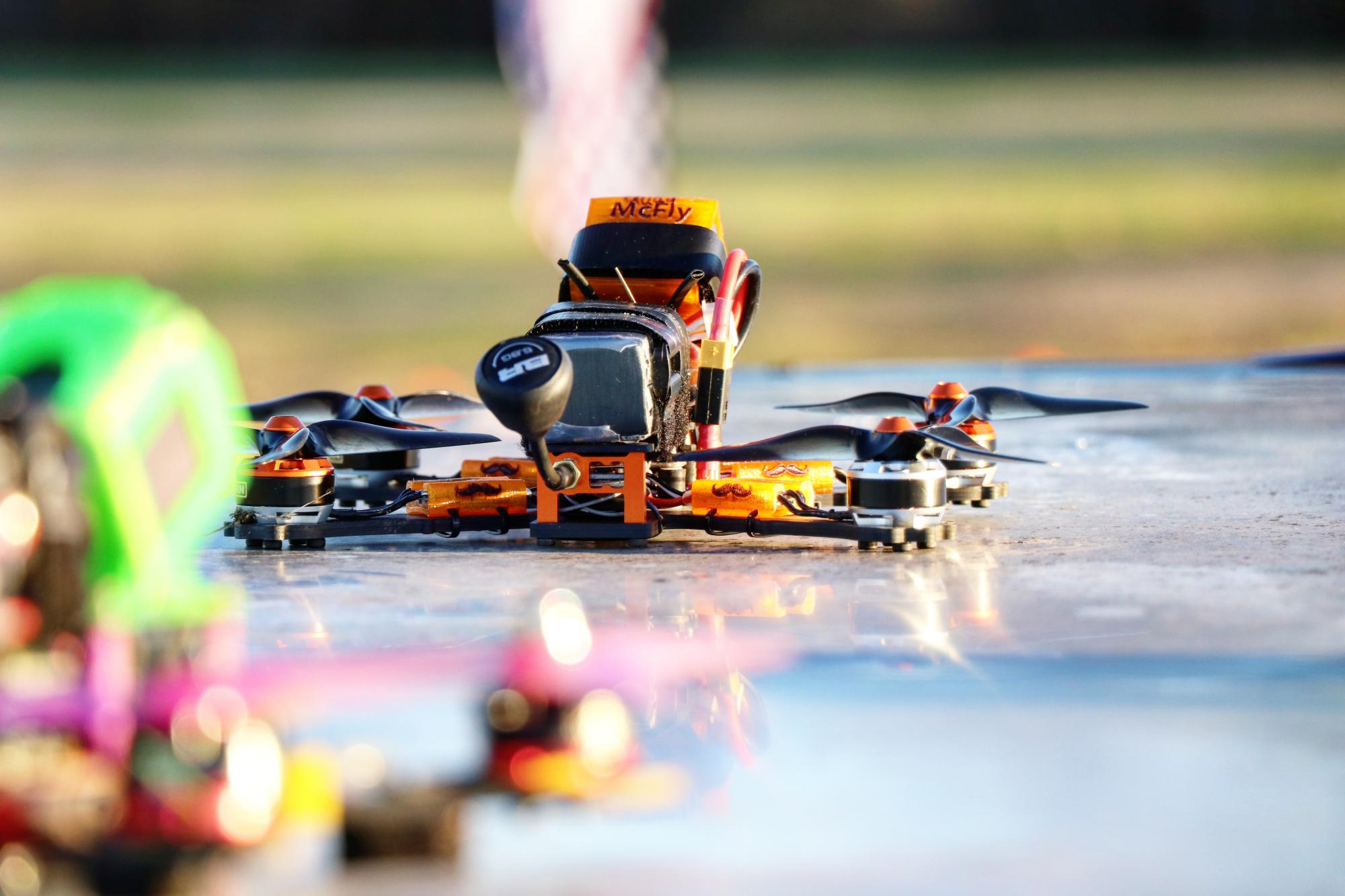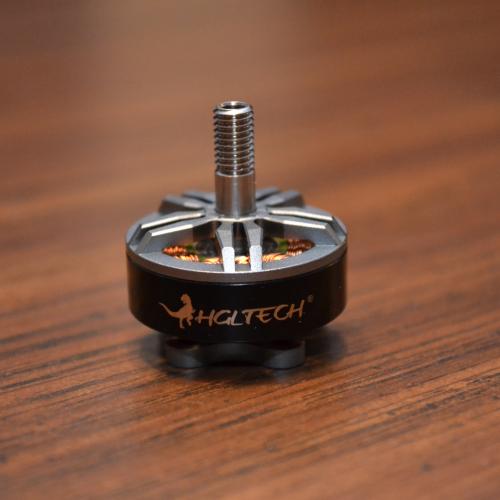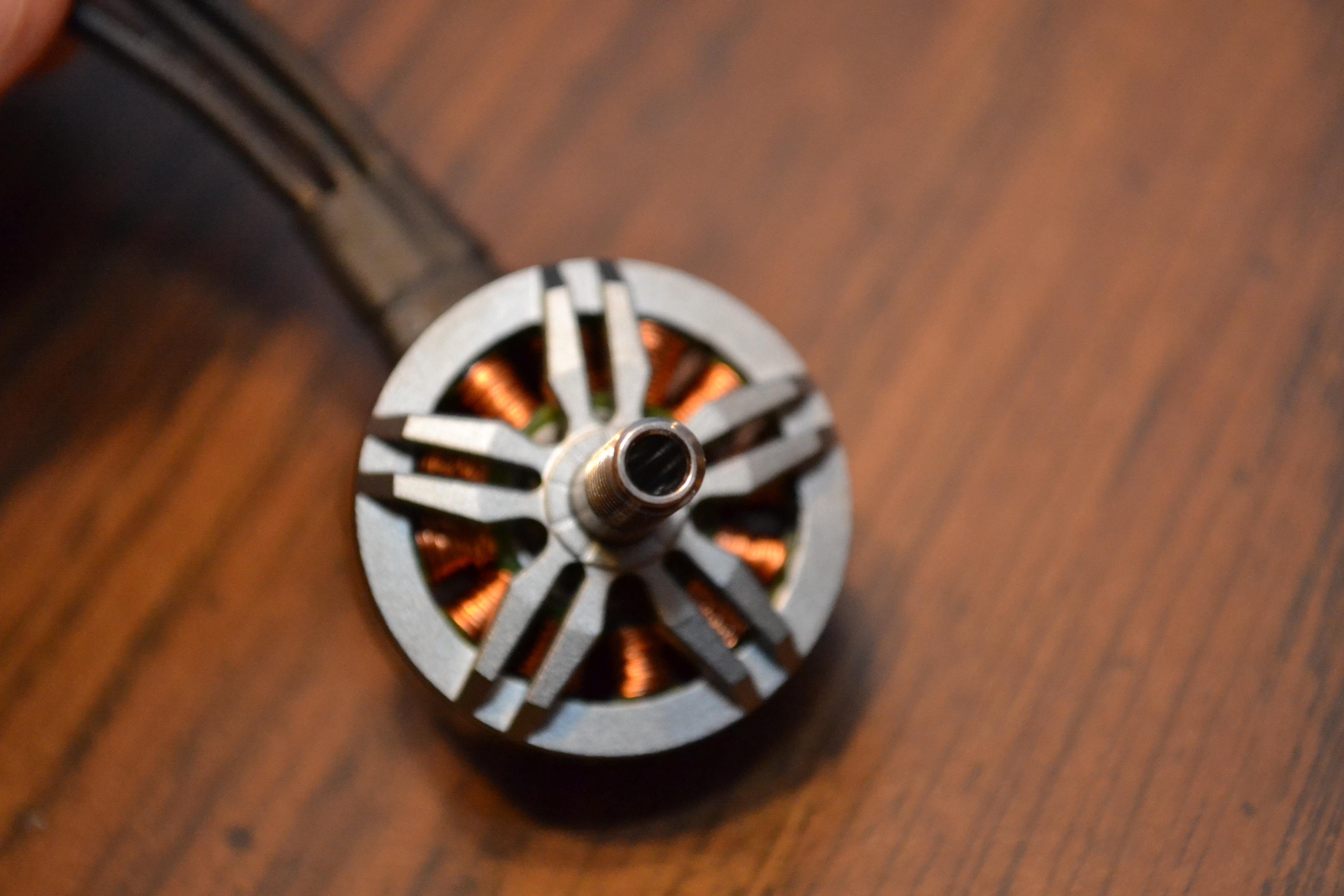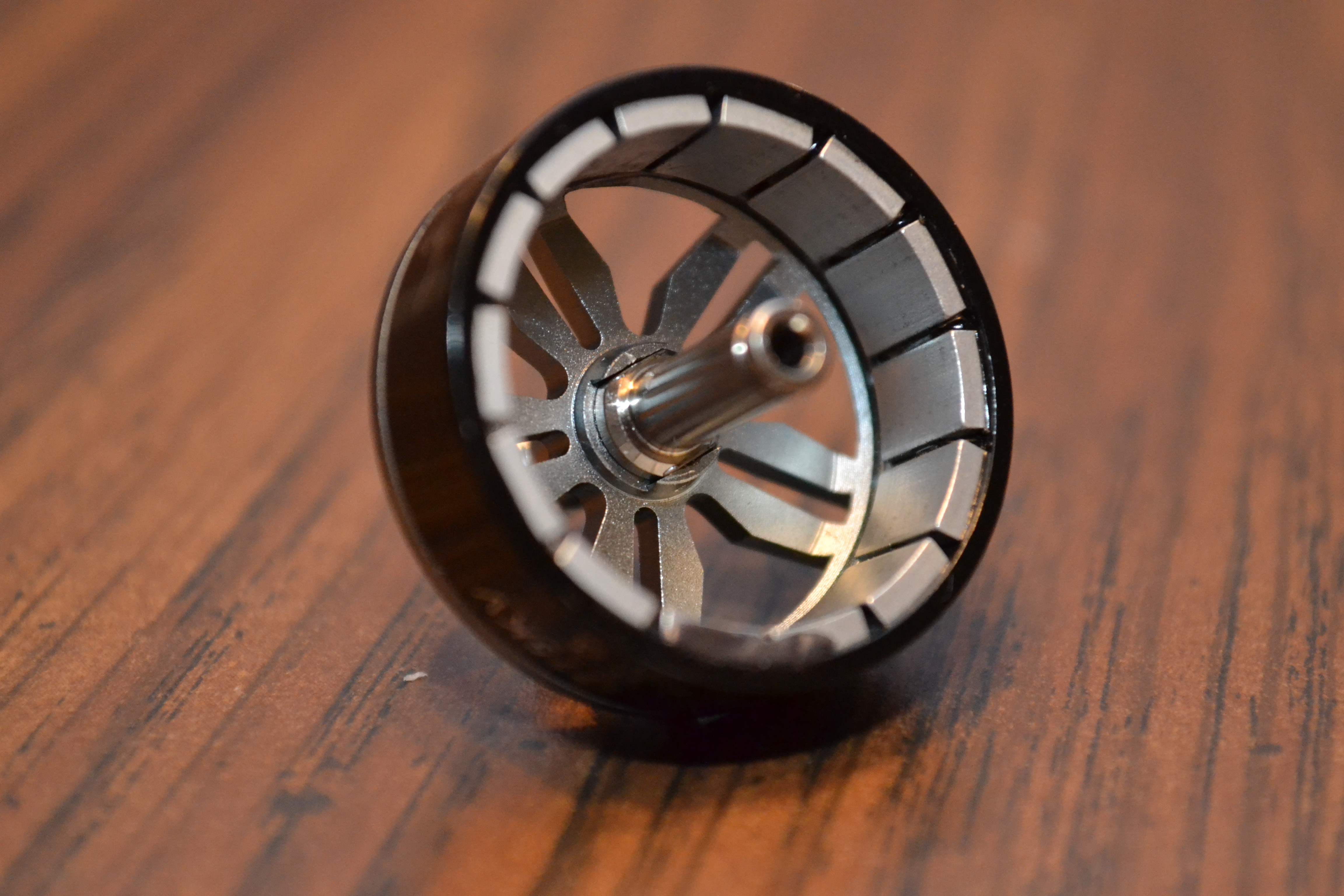- Home >
- Results >
- Motor Tests >
- Low KV >
- HGLRC Flame 2207-1775KV
We have a new leader of the thrust charts.
Check out the full list of motors in this series here
Summary
All the usual features are here. Quality materials, very tight air gap, thick arc magnets, quality bearings, 16x16mm mounting screw pattern, and very tight tolerances. In addition there are some non-standard design choices HGLTech made on this motor that were quite clever.
The bell shape looks like an efficient use of material. Quite strong without being overly heavy. I see a couple potential stress concentrations in the way it was machined, but I see similar things on other motors, so it is not a problem. Just a potential opportunity for further improvement.
The prop shaft is bored out to 3mm, whereas most shafts these days are bored out to 2.5mm. Where the shaft transitions into the narrower motor shaft (4mm), the bore necks down to 2mm, which is also slightly larger than normal.
There is a flat on the motor shaft, which mates to a slot feature in the motor bell. This serves to help transfer torque from the bell to the shaft. Traditionally, the bell is secured to the flat with a set screw, but that requires extra weight from the steel screw itself, and extra material in the bell top. The slot feature they used definitely helped keep moment of inertia down. The other method for securing the bell to the shaft is to use a large interference fit, which is very difficult to assemble, which in turn adds cost.
One choice I find quite bold, is the use of a retaining clip, rather than a screw. Of course, this used to be the standard, and for good reason. It weighs less, and is not subject to stripping like screws are, nor is it subject to over tightening. The downside is that it can be challenging to remove and replace, especially if you don’t have the proper tool for it. In this case it is actually a bit more challenging, even with the proper tool, because the bearing is recessed a couple millimeters deeper than usual. This is my only real complaint about the motor design.
They also went with 18ga wire. Normally I don’t think is strictly necessary, but in this case I think it is probably a good thing, because the current draw can get quite high on this motor. High enough that the thicker wire likely does improve efficiency a bit.
Overall these make for a reasonably light motor considering the extremely high performance. Weight is 31.7g with 40mm wires, which is nearly a full gram lighter than the T-Motor F60 Pro II, which is a very good motor to compare to. Time will tell whether any of these choices came at the detriment to durability, but I honestly don’t think that will be the case.
Results
Thrust. Allll the thrust.
This one tops list on thrust output for every one of the props tested, just barely edging out the F60 Pro II 1750KV. For the weight, that kind of performance is just incredible. Keep in mind though, we are not getting huge performance numbers for free. In order to keep it fed with electrons, you will definitely need to pair it with a quality battery, and be disciplined in your prop choice. That being said, the efficiency is really not bad for the level of performance.












































